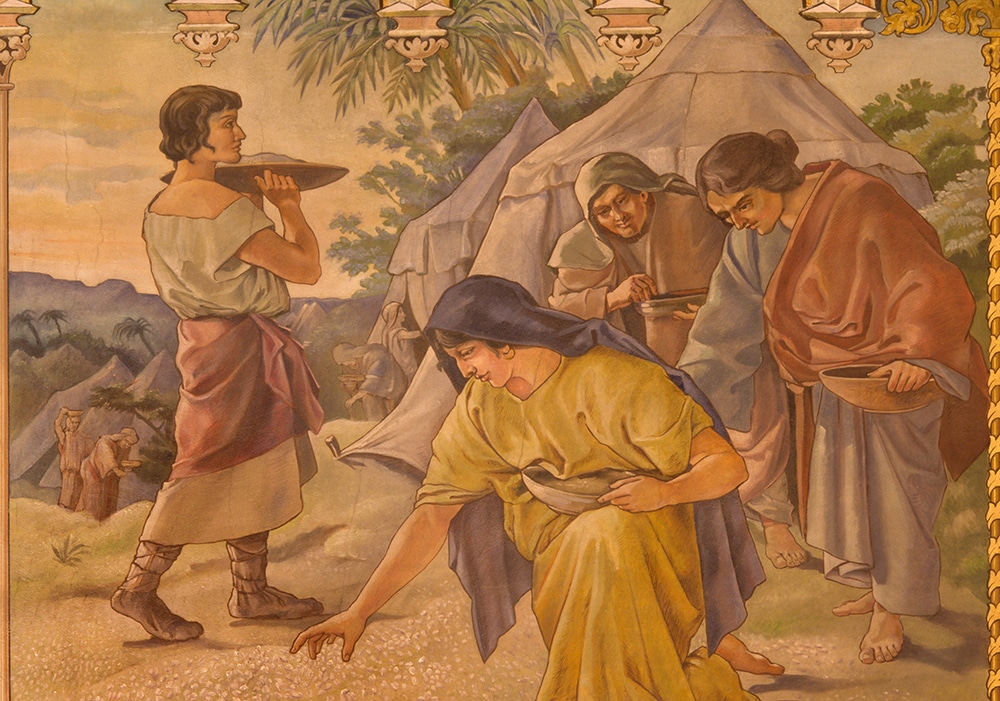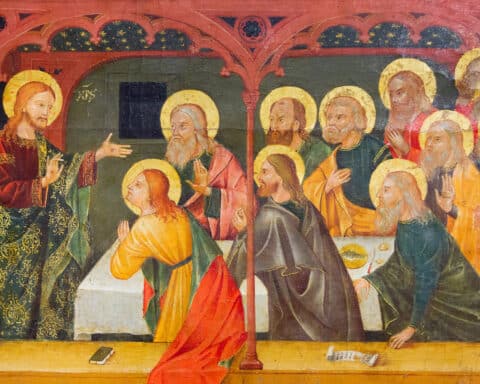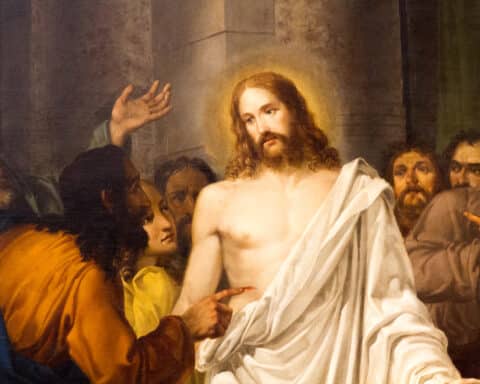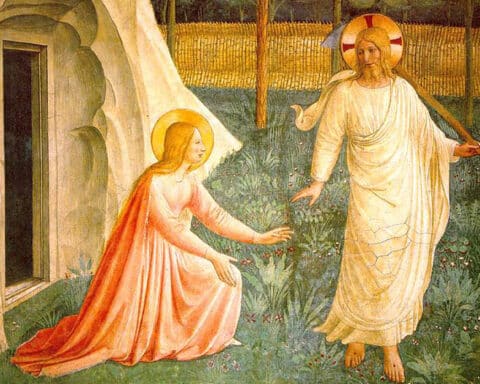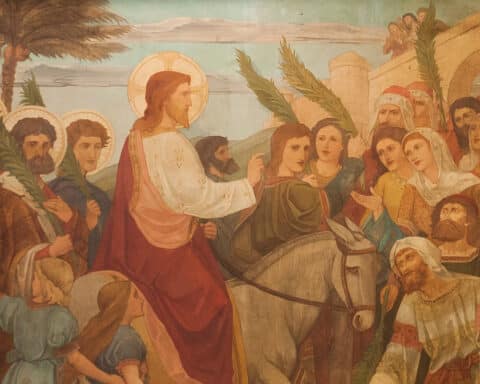
These miracles are patently Eucharistic. Jesus takes bread, says a blessing, breaks the bread, and then gives it to the disciples. This formula later appears in the Last Supper.
The miracles also tend to happen in deserted places, reflecting Jesus’ desire to feed the people of Israel once more in the desert with manna from heaven. The 12 remaining baskets of bread in the Gospel of Matthew points toward the 12 tribes of Israel, the entire human family now invited into communion with the living God.
| August 2, 2020 – 18th Sunday in Ordinary Time |
|---|
|
Is 55:1-3
Ps 145:8-9, 15-16, 17-18
Rom 8:35, 37-39
Mt 14:13-21
|
The timing of the miracle in the synoptic Gospels is worth further examination. In Mark, Matthew and Luke, the feeding miracle takes place after the death of John the Baptist. But in Matthew, the death of the Baptist is directly connected to the miracle.
Jesus goes to a deserted place on a boat, seeking to escape the crowds. He wants to be alone, and yet the crowds follow him. We can imagine why Jesus longs for solitude. The one who baptized Jesus in the Jordan has been killed by King Herod. His cousin is dead.
Further, the death of the Baptist invites Jesus to contemplate his own mission to give his life for the world. Surely, Jesus had heard how John the Baptist had died. His death was enacted by Herod to fulfill a promise to the daughter of Herodias related to her provocative dance that pleased the court. John the Baptist died because Herod had the power to kill him. And he used this power, this brute force, because he is the king. Aroused by Herodias’ daughter, he killed the prophet of God.
Surely, Jesus knew that he would be next. And so, he wants to be alone, to mourn the death of his cousin and to contemplate the imminence of his approaching passion.
But the crowds won’t have it. They follow him. Even as he is contemplating the violence that human beings can enact, the sin of the world, he looks with compassion on the crowds. Violence is transformed by the love of the Word made flesh, who heals the sick and feeds the hungry.
In this moment, Jesus reveals God’s plan for humanity. Whatever violence we can concoct, God will not abandon us. God’s sacrificial love transforms a violent world order into a space of generosity.
This transformation of a violent world into a space of gift, of love unto the end, is the mission of Jesus’ disciples. St. Paul evocatively teaches that the death of Jesus was not the terminus of human violence. As vulnerable creatures, we are subject to anguish, distress, persecution, famine and all sorts of suffering.
But, none of this can separate us from the love of Christ, from the love of the God-man who gave his life for the world.
St. Paul is not practicing a stoic escape. Pleasant thoughts will not save us from such violence. Rather, only the love that emptied himself upon the cross, the love that survived death — only the love of Jesus Christ can transform a violent world.
So, let us receive the bread of compassion from the hands of the Lord. And through this gift, may our eyes be formed to perceive even in the meaningless violence of this age, the first rays of hope.
Timothy P. O’Malley, Ph.D., is the director of education at the McGrath Institute for Church Life at the University of Notre Dame.

